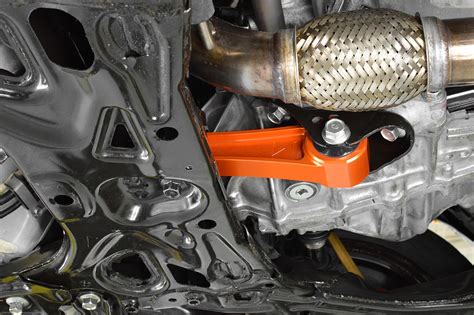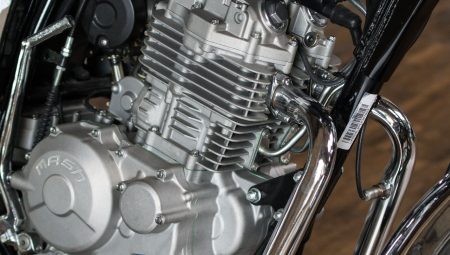Explore the significance, signs of wear, and replacement tips for rear engine mounts to ensure optimal performance and longevity for your vehicle.When it comes to vehicle performance and stability, the often-overlooked component known as the rear engine mount plays a crucial role. Rear engine mounts are designed to secure the engine in place, absorbing vibrations and preventing excessive movement while driving. Understanding their function and importance is essential for every car owner, as a worn or damaged mount can lead to a variety of issues, including excessive noise and reduced handling. In this blog post, we will explore the significance of rear engine mounts, the common signs of wear to watch for, and guidance on replacement and selecting the best rear mount for your vehicle. By the end, you’ll be equipped with the knowledge to ensure your car runs smoothly and safely.
Understanding Rear Engine Mounts
Rear engine mounts, which play a crucial role in securing the engine to the vehicle’s chassis, are specifically designed to dampen vibrations and absorb shocks, ensuring a smooth and comfortable ride for both the driver and passengers; it is essential to appreciate how these mounts function in connection with other components in the vehicle, including the transmission and driveshaft, providing not only stability but also contributing to the overall performance of the automobile.
These mounts are typically constructed from materials such as rubber or polyurethane, designed to withstand significant stress and provide longevity while effectively isolating the engine from the chassis; as the engine operates, the vibrations and movements generated by the internal combustion process can be substantial, and without the proper mitigation offered by the rear engine mounts, these forces would translate into discomfort within the vehicle, leading to potential wear and tear on internal parts.
It is also important to note that the design and placement of rear engine mounts can vary depending on the make and model of the car, influencing factors such as engine angle and vehicle dynamics, thus highlighting the necessity for appropriate customization when replacing or upgrading these mounts; considering these factors can lead to enhanced performance and efficiency, thereby facilitating a better driving experience.
Importance of Rear Engine Mounts
The rear engine mounts serve a crucial role in the overall performance and longevity of a vehicle, as they are designed not only to support the weight of the engine but also to reduce vibrations and noise, thus enhancing the driving experience and ensuring structural integrity. These mounts, typically made of rubber and metal, play an essential role in securing the engine in place, allowing it to function optimally while absorbing shocks and vibrations that may occur, particularly during acceleration or rough driving conditions.
Moreover, a well-functioning rear engine mount is vital for optimal engine alignment, and misalignment can lead to premature wear and tear on other components such as the transmission and drivetrain, which may eventually result in significantly more expensive repairs down the line. Not only do these mounts contribute to the stability of the engine, but they also help maintain proper alignment of vital components, thereby improving overall vehicle safety and performance.
In addition, it is imperative to recognize the importance of rear engine mounts in relation to vehicle dynamics, as they help to ensure that the engine and transmission remain positioned appropriately, which in turn affects acceleration, handling, and braking performance; a damaged or worn-out rear engine mount can lead to a host of issues including excessive vibrations, misalignment, and even engine movement that can compromise the functionality of the vehicle’s control systems.
Common Signs of Rear Mount Wear
The rear engine mount, an essential component of the vehicle’s support system, plays a pivotal role in maintaining the alignment of the engine and minimizing vibrations that can be felt inside the cabin, and recognizing the common signs of wear in rear engine mounts is crucial for car enthusiasts and everyday drivers alike, as failure to identify these issues early can lead to more extensive repairs and compromise driving safety.
One of the most noticeable indicators of rear mount wear is an increase in engine vibration that can be felt throughout the vehicle, which often manifests as a rumbling noise or a harsh feel in the cabin, especially when accelerating or braking; this can be attributed to the mount losing its capacity to dampen the engine’s movement effectively, and when these vibrations become pronounced, they suggest that the mount is deteriorating and may need immediate attention.
Another common sign is a visible misalignment of the engine, where the engine may appear tilted or misaligned in its compartment, and upon close inspection, one might notice the rear mount showing signs of physical damage such as cracks, tears, or excessive wear, indicating that the mount has reached its limit; hence, being aware of such symptoms and acting promptly can save you from facing premature
Replacing Your Rear Engine Mount
When it comes to maintaining the performance and safety of your vehicle, understanding the importance of rear engine mounts is crucial because they are responsible for securing the engine to the chassis, dampening vibrations, and providing stability, thus ensuring a smooth driving experience. The process of replacing your rear engine mount might seem daunting at first; however, with the right tools and guidance, it can be a manageable task that saves you time and money in the long run.
To replace your rear engine mount, you will need a variety of tools such as a socket set, wrench set, and possibly a floor jack for additional support, as the engine may need to be raised slightly to access the old mount. Begin by ensuring that your vehicle is parked on a level surface and that you have the proper safety equipment in place, as working underneath a vehicle can present various hazards that you must be prepared for. Once your car is secured, locate the rear engine mount, typically situated at the back of the engine, and inspect the surrounding components for any other potential issues that might require attention.
After you’ve accessed the old mount, carefully remove the bolts securing it, followed by gently lifting the engine if necessary, ultimately allowing you to install the new rear engine mount. When installing the new mount, make sure it is aligned properly and that all bolts are tightened to the manufacturer’s specifications, ensuring that it will function effectively without compromising the integrity of the surrounding components. Following the replacement, it’s advisable to check for any unusual vibrations or noises while driving, which can indicate that the new mount has been improperly installed or that additional adjustments may be needed.
Choosing the Right Rear Mount for Your Car
When it comes to the delicate balance of vehicle stability and performance, selecting the right rear engine mount for your car is of paramount importance as it plays a crucial role in maintaining alignment, reducing vibrations, and ensuring the smooth operation of the engine while also contributing to the overall lifespan of the vehicle’s components.
There are several factors to consider when making this choice; not only should you focus on the specifications provided by your manufacturer, but you should also take into account the materials used in the mount, which can vary from rubber to polyurethane, as well as the compatibility of the mount to your vehicle model, since each car comes with unique mounting configurations and specifications that need to be matched accordingly.
Additionally, consulting with professionals or referring to customer reviews can provide valuable insights into the performance and longevity of the rear engine mounts available in the market, ensuring that you make an informed decision that is suited for your driving habits and conditions; ultimately, this investment will contribute to a more comfortable ride and prevent potenti
Frequently Asked Questions
What is the function of a rear engine mount?
The rear engine mount secures the engine to the vehicle’s chassis, absorbing vibrations and minimizing engine movement during acceleration and deceleration.
What are the signs of a failing rear engine mount?
Signs of a failing rear engine mount include excessive engine vibrations, unusual noises (like clunking), misalignment of the engine, or visible wear and tear on the mount itself.
How often should you inspect your rear engine mount?
It’s recommended to inspect your rear engine mount during regular vehicle maintenance, particularly if you notice any symptoms of wear or damage.
Can a damaged rear engine mount affect vehicle performance?
Yes, a damaged rear engine mount can lead to increased vibrations, misalignment that affects handling, and potential damage to other components, ultimately impacting overall vehicle performance.
What materials are rear engine mounts typically made of?
Rear engine mounts are typically made of rubber and metal, designed to provide cushioning while offering sufficient strength to hold the engine securely in place.
How much does it cost to replace a rear engine mount?
The cost to replace a rear engine mount can vary widely depending on the vehicle make and model, but typically ranges from $100 to $500 including parts and labor.
Can a rear engine mount be replaced by a DIY enthusiast?
While some experienced DIY enthusiasts may attempt to replace a rear engine mount, it often requires specific tools and knowledge, so it’s advisable to consult a professional mechanic for proper installation.





